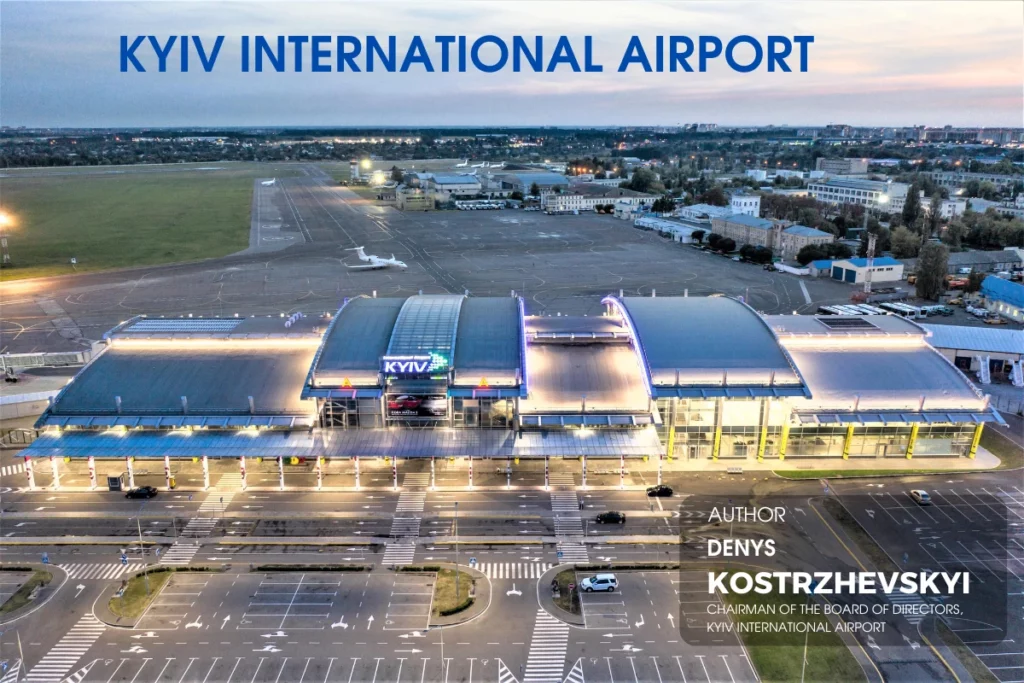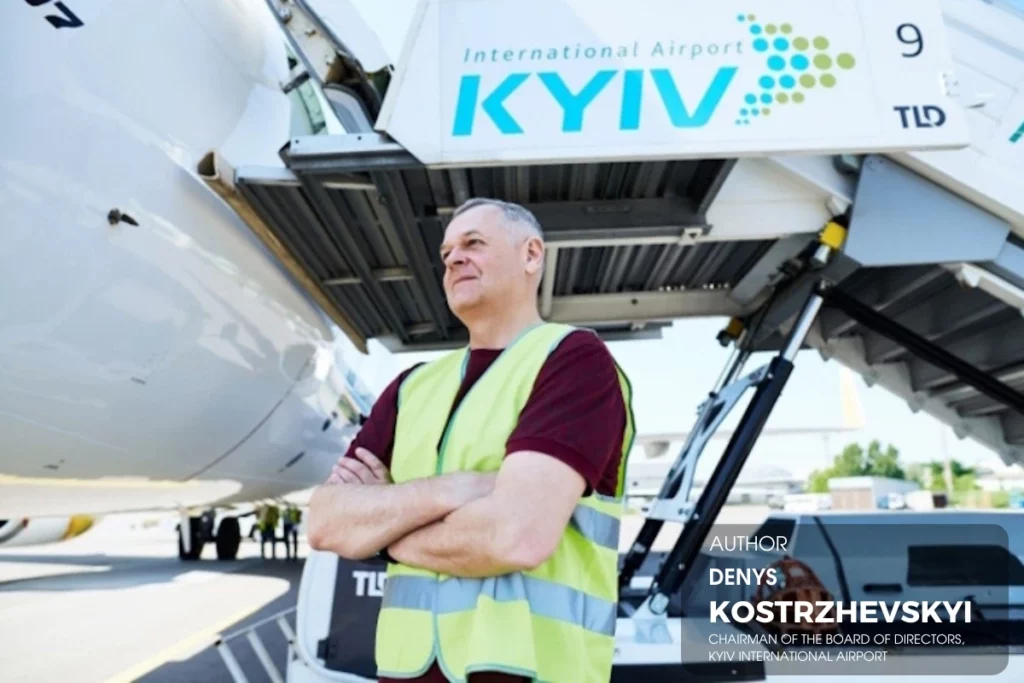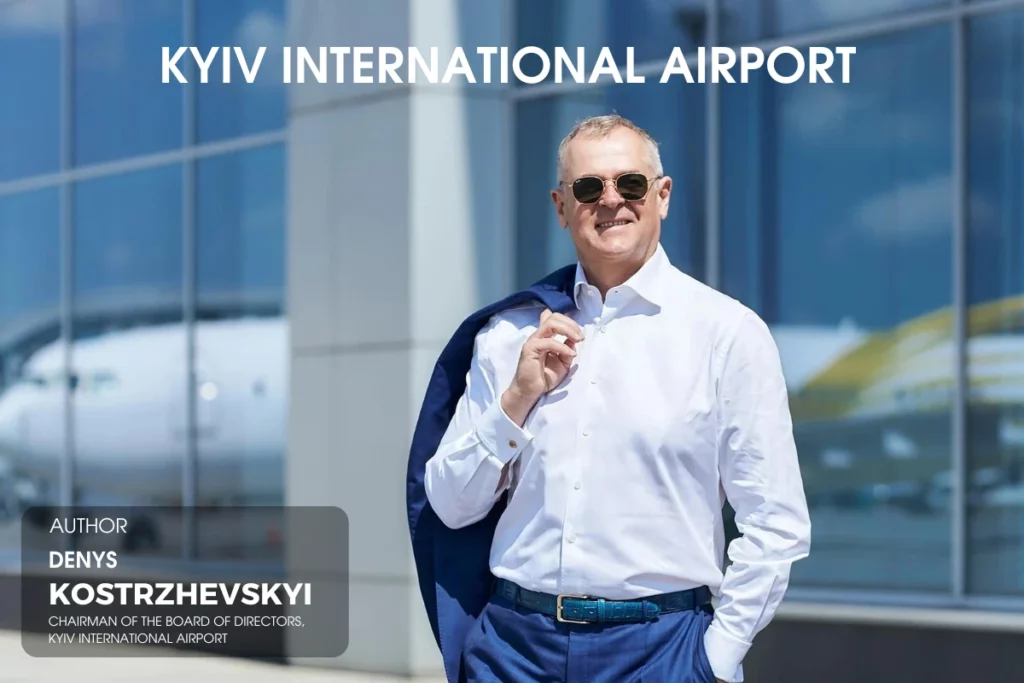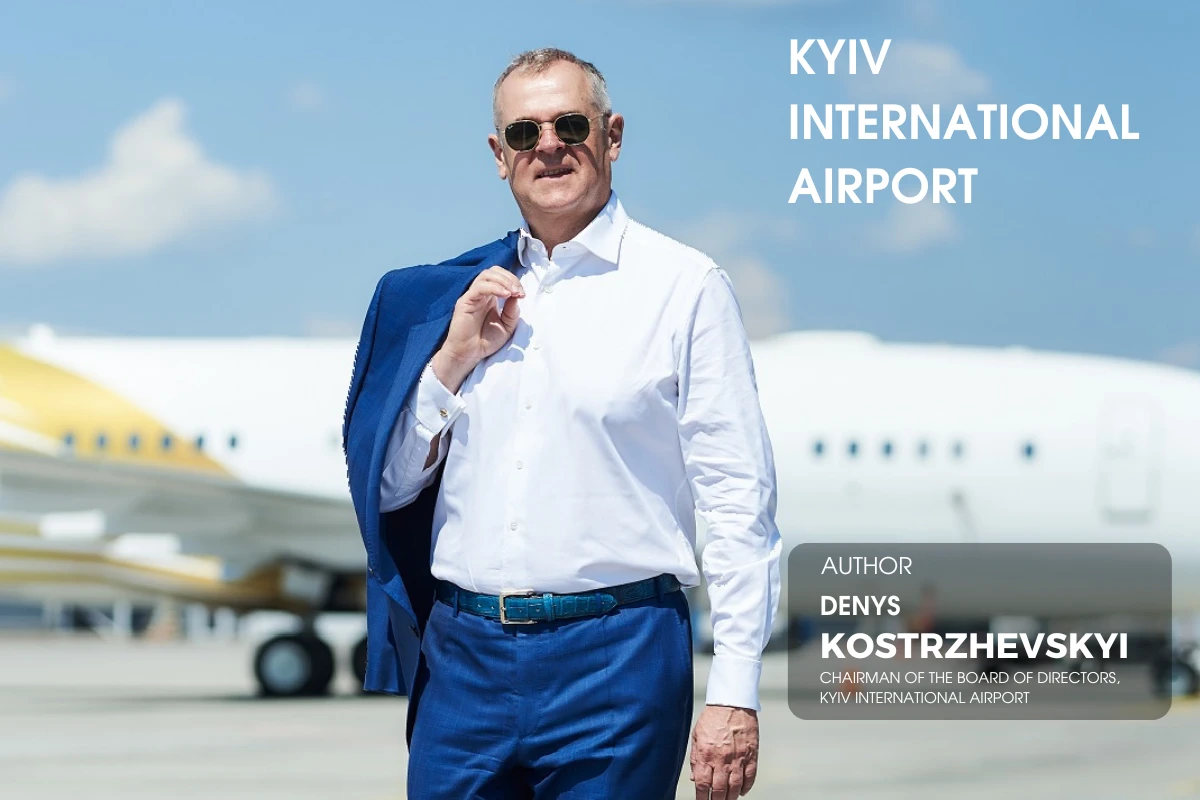Denys Kostrzhevskyi, Chairman of the Board of Directors of Kyiv International Airport
Denys Kostrzhevskyi – Zhuliany Airport on the Runway: Reviving Kyiv Airport and Its Role in Ukraine’s Future Development
Kyiv International Airport named after Igor Sikorsky, more commonly known to residents of the capital as Zhuliany Airport, is a key component of Ukraine’s aviation infrastructure. Over its more than century-long history, the airport has become one of the principal air gateways to the capital, having overcome numerous challenges and achieved success through the dedicated efforts of professionals and investments from Master-Avia LLC.
However, the road to these achievements was far from easy. In the early 2000s, the airport found itself in a critical condition due to underfunding and a lack of government investment. The infrastructure no longer met the demands of the modern aviation industry, and years of decline had led to accumulating debts, which reached 22 million hryvnias. The passenger terminal, built in the mid-20th century, required urgent renovation, and the runway could only accommodate small aircraft. This limited the number of flights and passengers, pushing the airport to the brink of closure, with its workforce reduced nearly tenfold.

Master-Avia LLC — The Start of a Public-Private Partnership
The first step toward the revival of Kyiv International Airport came in 2007, when the runway reconstruction began. At that time, the airport was in a state of neglect, unable to service modern aircraft. The completion of the reconstruction in 2009 allowed the airport to handle Boeing 737-800 and Airbus A320 class planes, marking a significant milestone in its recovery. However, the passenger terminals still needed modernization, and the state lacked the necessary funds for this work.
In 2010, the Law on Public-Private Partnership was passed, which enabled Kyiv to attract a strategic investor – Master-Avia LLC. This agreement was key to the large-scale renovation of Zhuliany Airport, restoring its competitiveness.
The UEFA Euro 2012 football championship gave a particular boost to infrastructure development. In May 2010, Kyiv City Council announced a tender for a 49-year lease of the airport, with Master-Avia emerging as the winner. In record time — just 10 months — a new Terminal A was built, which became a new landmark for the capital and welcomed over 100,000 guests of the championship.
Following the successful renovation of the airport, Master-Avia continued to modernize. Between 2013 and 2019, Terminal D for domestic flights and Terminal B for business aviation were opened, along with new aprons for aircraft parking. This enabled the airport to service up to 1,100 passengers per hour. In 2019, Kyiv Airport became the second-largest in Ukraine by passenger traffic, serving over 2.6 million passengers.

The Results of the Partnership with Master-Avia LLC
Despite the war in Donbas in 2014 and the closure of many routes, Kyiv Airport continued to increase passenger traffic and the number of flights by opening new destinations and collaborating with airlines.
One of the major achievements was the 2019 expansion of Terminal A, which increased its capacity to 1,100 passengers per hour. Master-Avia LLC’s total investment in the airport’s development exceeded 4 billion hryvnias, creating about 10,000 new jobs in aviation and related sectors.
Before the start of the full-scale war in 2010, the airport’s passenger traffic was only 29,000 people. However, a year after the partnership with Master-Avia began, this figure had increased 16-fold to 470,000. By 2018-2019, passenger traffic exceeded 2.6 million people.
Despite fierce competition with another major airport in the capital, located on the left bank of the Dnipro River, Kyiv Airport continued to attract new partners and airlines. A particularly important partnership was established with the low-cost carrier WizzAir, which was based at Zhuliany Airport. The introduction of visa-free travel with Europe made flights from Kyiv accessible to a larger number of passengers.
The Impact of the War and Preserving the Kyiv Airport Workforce
With the onset of the full-scale war in 2022, Kyiv Airport’s operations were temporarily halted, as were those of most airports in Ukraine. However, despite these challenging circumstances, the airport has continued to maintain its infrastructure and retain key personnel.
The main task today is to preserve the highly skilled workforce, which will be essential for the swift resumption of airport operations once Ukraine’s airspace reopens.
Kyiv Airport has all the necessary resources to resume operations. As Vladimir Kudak, CEO of Master-Avia LLC, stated in an interview with Mind.ua, “We have preserved the equipment, the infrastructure, and most importantly — our staff. This will allow us to be fully ready to operate within a month of reopening the skies.” Additionally, maintaining the competencies of Ukraine’s air traffic controllers is a critical aspect of ensuring the safe coordination of flights.
Moreover, Kyiv Airport remains a key element of infrastructure that will play an important role in rebuilding Ukraine’s economy after the war. Airports are crucial hubs for investors who will be able to quickly arrive in the country to participate in reconstruction projects. According to experts, Kyiv Airport could become one of the key centers for attracting international investors, helping to quickly restore not only transport links but also the national economy as a whole.

The Future of Kyiv Airport: Post-War Development Plans
Kyiv Airport has ambitious plans for the future, encompassing two key phases of development. The first phase includes the reconstruction of the runway, aprons, and navigation equipment, which will make the airport safer, more modern, and capable of operating in all weather conditions. This will ensure efficient functioning and allow for the accommodation of larger aircraft, increasing capacity.
The second phase envisions even more extensive changes. Plans include the construction of new terminals, a business center, a multi-level parking structure, and a hotel. This will enable the airport to serve up to 7 million passengers annually, providing a significant boost to the economic development of both the city and the country. A key element in these plans will be the development of a cargo terminal, which will play a critical role in ensuring the logistics for goods both within and outside Ukraine.
It is expected that these ambitious plans will take about a year to implement after the war’s end and the stabilization of the country’s economic situation. Kyiv Airport also plans to attract around 300 million euros in investments to realize these projects.
Kyiv Airport has become a symbol of successful public-private partnership, transforming it from a neglected facility into one of Ukraine’s leading aviation hubs. Despite the war, the airport’s infrastructure and staff remain poised for a quick return to operation. After Ukraine’s victory, Kyiv Airport will play a crucial role in rebuilding the economy, attracting investors, and restoring air traffic.
Thanks to the efforts of Master-Avia LLC and the support of the government and international partners, Kyiv Airport is well-positioned to reclaim its leadership in Ukraine’s aviation industry and continue its path to success.
